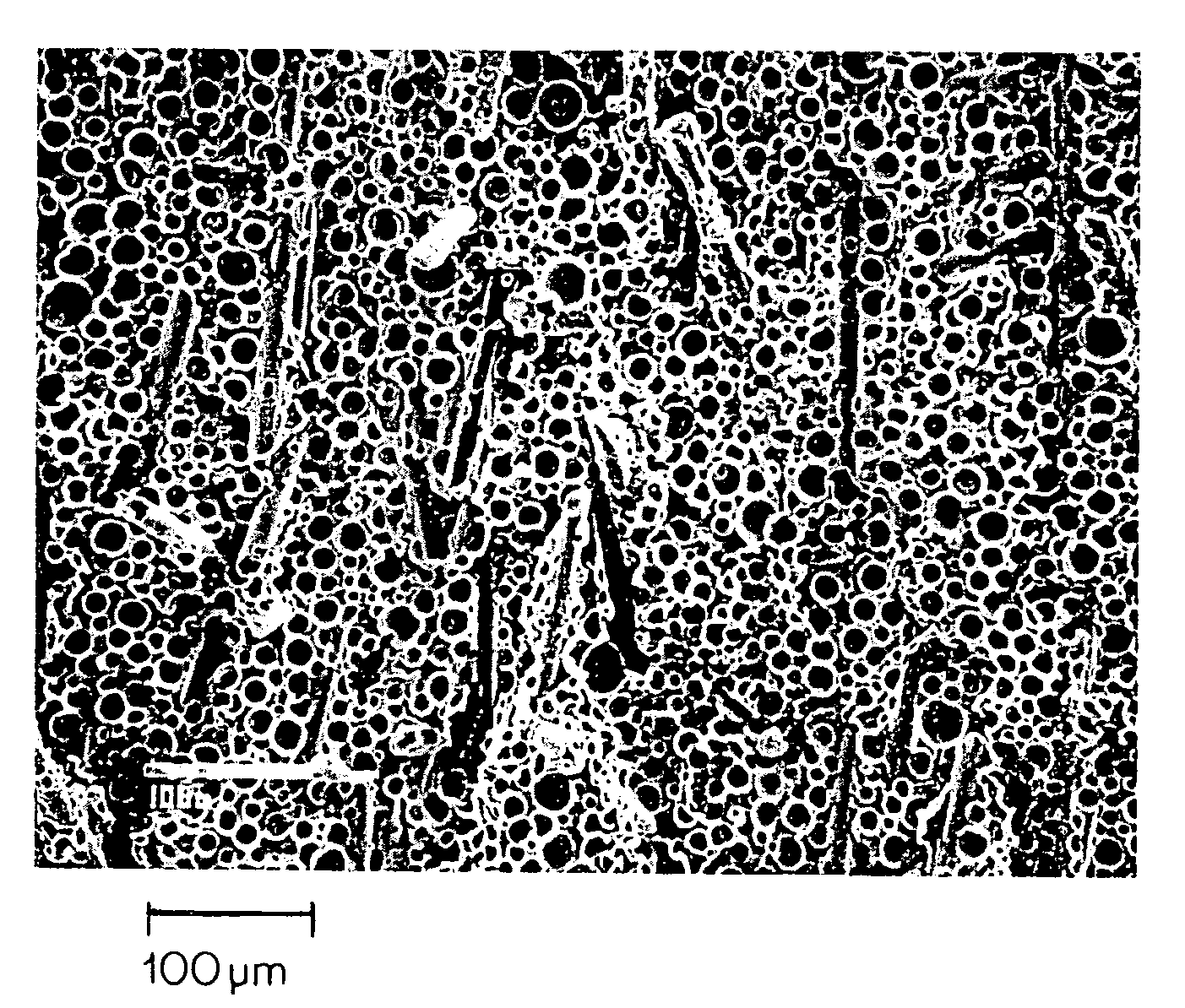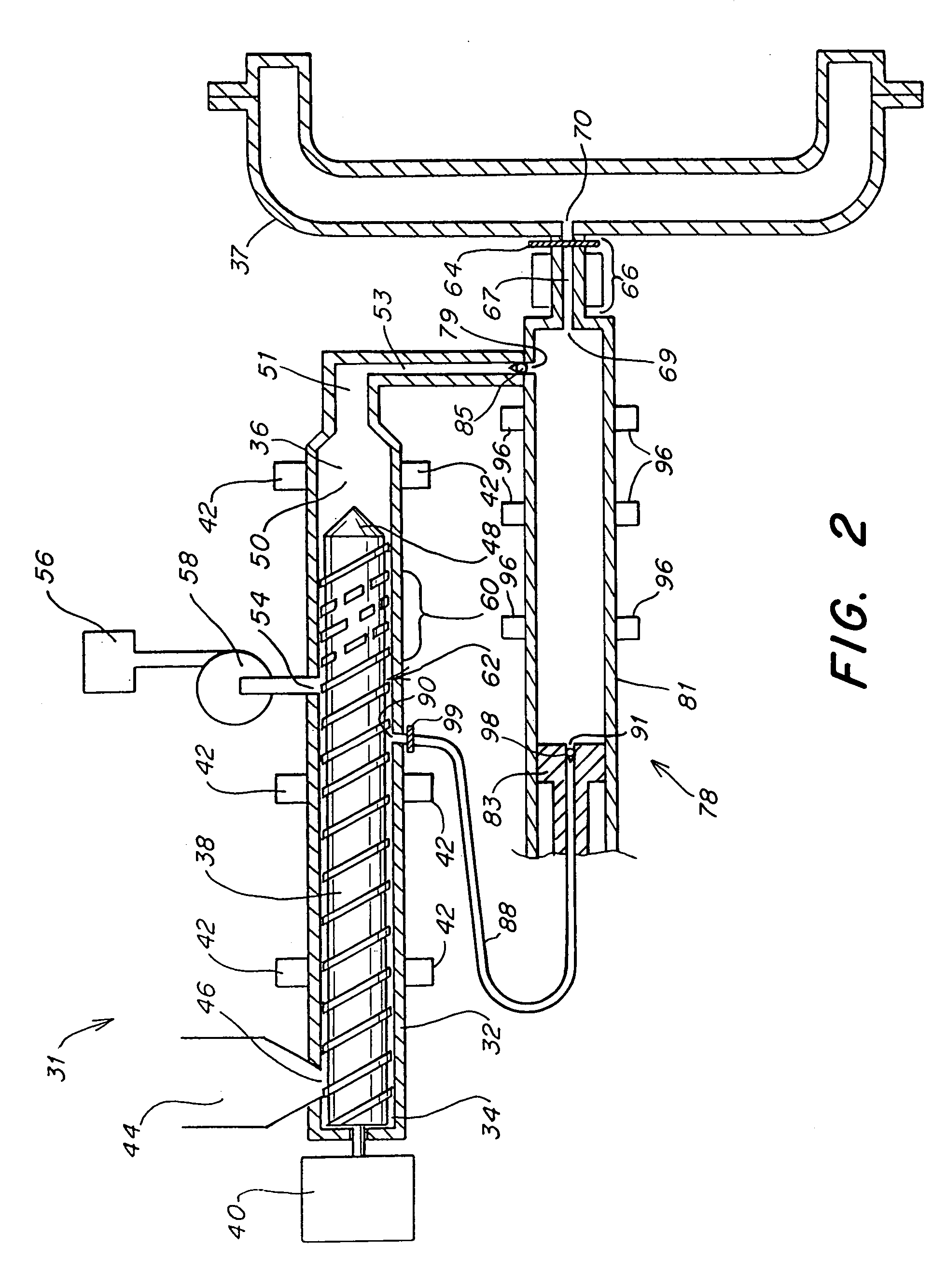Fiber-filled molded articles
a technology of fiber-filled molded articles and polymeric materials, which is applied in the direction of other domestic articles, woodworking apparatus, transportation and packaging, etc., can solve the problems of compromise of the properties of the resultant articles, and achieve the reduction of physical degradation of fibers in polymeric materials injected into molds, less stress, and reduced material viscosity.
- Summary
- Abstract
- Description
- Claims
- Application Information
AI Technical Summary
Benefits of technology
Problems solved by technology
Method used
Image
Examples
example 1
Printer Chassis
[0093]A Cincinnati Milacron Magna 400 400-ton reciprocating screw injection molding machine was used. Twenty percent glass fiber-reinforced polyphenylene oxide (PPO; GE Plastics Noryl™ resin) was used as the precursor polymer to be molded, and a supercritical fluid additive (nitrogen), also served as the blowing agent to form a molded foam chassis.
[0094]A system was used as shown schematically in FIG. 1.
[0095]The printer chassis mold used was a conventional single-cavity mold that operated with two plates and one parting line. It included a valve-gated hot sprue bushing that gated directly into the center of the part. The cavity was fairly complex in design and had a number of slides, core pins, and thin blades that help form the part. The dimensional requirements for the parts are tight and any warpage would be a concern.
[0096]The design of the mold was such that it produced a molded part having a nominal wall thickness of 2.5 mm. It included a number of bosses and d...
example 2
Injection-Molded Blower Housing
[0104]A Cincinnati Milacron Magna 400 400-ton reciprocating screw injection molding machine as described in Example 1 was used. Two precursor polymer materials were used, namely, (1) Celstran PP-GF40-02-4 40% long glass fiber filled propylene, Length P11, and (2) Celstran PA6-GF50-03 50% long glass fiber filled nylon, Length P11. The mold was that of a blower housing.
[0105]Celstran PA6-GF50-03 50% long glass fiber filled nylon: The process described above was also run in 50% glass filled nylon. Nitrogen was used as supercritical fluid additive at 0.2, 0.4 and 0.6% loading. Solid material was produced as well as microcellular material at weight reduction of 6 and 11%. The nylon process was run with the barrel heats set as follows. The front barrel zones containing the supercritical fluid were set to 490 F. This is 70 F below the standard solid process settings (560 F). The rear zones were set to 530 in order to achieve proper screw recovery. Void volume...
example 3
Injection Molding of Fiber-Reinforced Condensate Pan
[0109]An injection-molding system as described in Example 1 was used. Precursor material was 10% glass-filled polycarbonate, specifically, GE ML-5139 (GE Plastics). As above, solid parts were made in order to establish a standard, comparative process and article.
[0110]Articles then were molded using a supercritical fluid additive, specifically with 0.2% nitrogen. Samples were run at 10, 15 and 20% weight reductions. FIG. 8 is a photocopy of an SEM image of a cross-section of a resultant article.
[0111]Table 4, below, shows increased strength of molded drip trays having viscosity reducing additives, consistent with longer fiber lengths shown in Table 3.
[0112]
TABLE 4Displacement atDisplacement atTrial #% Weight ReductionYield (CF)Yield (F)8. 0 0.3400.3379. 7%0.3430.35210.13%0.3260.32511.27%0.2620.314
[0113]FIG. 10 shows condensate pan (drip tray) glass fiber length distribution of the molded article without a supercritical fluid addi...
PUM
| Property | Measurement | Unit |
|---|---|---|
| length | aaaaa | aaaaa |
| average cell size | aaaaa | aaaaa |
| saturation pressure | aaaaa | aaaaa |
Abstract
Description
Claims
Application Information
 Login to View More
Login to View More - R&D
- Intellectual Property
- Life Sciences
- Materials
- Tech Scout
- Unparalleled Data Quality
- Higher Quality Content
- 60% Fewer Hallucinations
Browse by: Latest US Patents, China's latest patents, Technical Efficacy Thesaurus, Application Domain, Technology Topic, Popular Technical Reports.
© 2025 PatSnap. All rights reserved.Legal|Privacy policy|Modern Slavery Act Transparency Statement|Sitemap|About US| Contact US: help@patsnap.com



